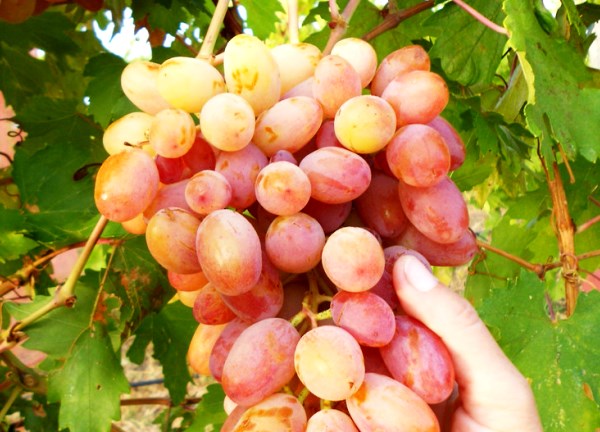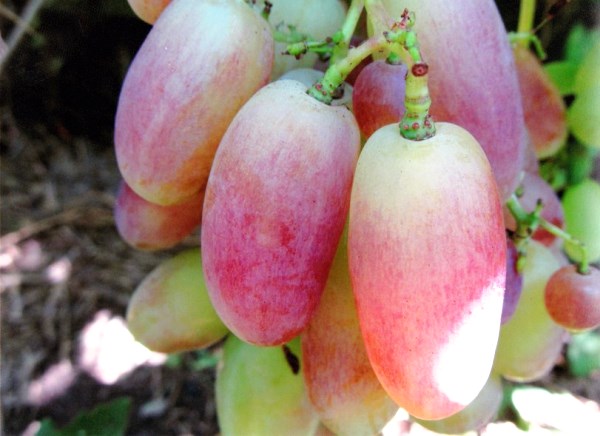Features of growing Julian grapes
Table grapes are called so because the fruits of this variety are served fresh or as a dessert, or as a decoration to add special charm, aesthetics, and festivity. But you also need to be able to choose the right table grapes, because the fruits are different in shape and color, which is already talking about the variety of tastes. Sometimes it is desirable that the flavor of the berries is in harmony with other dishes. There are varieties, the fruits of which will suit any table. For example, the Julian table grape variety, which will be discussed in this article, and specifically - a description of the characteristics, especially the care of the crop.
Characteristics of the variety
Julian grapes - a product of the activity of an amateur breeder, was obtained as a result of crossing the Kesha and Rizamat varieties, from which it inherited only the best characteristics. Julian is an early (one might even say very early) variety, from the beginning of flowering to the ripening of fruits, a period of 95-105 days passes, that is, the harvest can be harvested already in the first decade of August. His bunches are loose, large, sometimes very large (the average weight of bunches is 700-1000 g, and with very close care, as a result, they can weigh 1.4-2 kg). The peduncle is long, the bunch is either shapeless, or vaguely resembles a cylindro-conical one, this is a significant similarity with the parental Rizamat grape. To match the bunches and berries of Julian - large, finger-like, weigh from 15 to 20 g. The pink color is slightly diluted with a yellow tint, there are berries and darker - lilac. The pulp is crispy and dense, with a very thin skin (when consumed, it is practically not felt), the harmonious taste is complemented by a light nutmeg aroma. The berries are not prone to cracking, they have a good sugar storage capacity, while wasps are not actually damaged.
What is sick
The Julian grape is a hybrid form, relatively new, therefore it has not yet been fully studied, but some features have already been established. One of the parent varieties - Kesha - was bred with good immunity from some diseases, this property was inherited by the Julian grape. In many sources, in the description of Julian, increased resistance to powdery mildew and mildew is indicated. The coefficient of resistance to gray rot is slightly lower. But despite such good reviews, you need to be prepared for anything. For prophylaxis against oidium, it is enough to spray the plants with a solution of colloidal sulfur. During a long rainy period, anthracnose may develop, which damages not only the leaves (brown spots are formed), but also young shoots. At elevated temperatures and moisture, the variety can undergo alternariosis, which affects the leaves and fruits. In order to prevent the death of Julian, periodically inspect the plants and do preventive treatments.
Care features
Julian grapes require the same attention to themselves as most varieties, no specific actions are provided. Choose an open place for landing, preferably on a southern or western slope, so that there is no shortage of sunlight. If it is not possible to plant in fertile soil, then add fertilizers to the ground and do top dressing in the future.In most cases, this variety is planted by cuttings, the root system then develops quickly. It combines well with other varieties, grafting has a beneficial effect on yield. Particular attention should be paid to pruning when considering the characteristics of each variety. For Julian grapes, it is carried out for 8-10 eyes, the best solution would be to leave no more than forty-five eyes. Also keep an eye on the number of inflorescences and bunches to avoid overloading the plants.
Julian grapes are one of the best table varieties that can be easily grown at home. Unlike some imported species, it does not need to adapt to our conditions, it has not the worst characteristics, so many gardeners prefer it.
Video "Julian Grape"
In this video, the characteristics of the hybrid variety Julian are given: a description of the fruits, taste, yield, peculiarities of vine cultivation.



